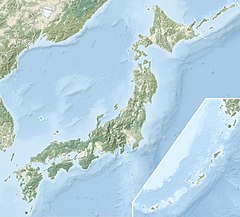
Yakushi-ji (薬師寺) is one of the most famous imperial and ancient Buddhist temples in Japan, and was once one of the Seven Great Temples of Nanto, located in Nara. The temple is the headquarters of the Hossō school of Japanese Buddhism. Yakushi-ji is one of the sites that are collectively inscribed as a UNESCO World Heritage Site under the name of "Historic Monuments of Ancient Nara."

Mutsu Kokubun-ji (陸奥国分寺) is a Buddhist temple in Wakabayashi-ku, Sendai, Japan, belonging to the Shingon-shū Chizan-ha sect, and is the provincial temple ("kokubunji") of former Mutsu Province. The grounds of the temple are a National Historic Site. and one of its structures, the early Edo period Yakushi-dō (薬師堂) is an Important Cultural Property.
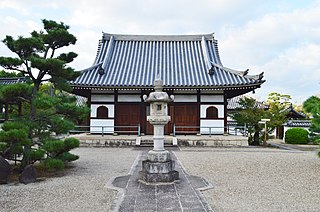
Yachū-ji (野中寺) is a Buddhist temple located in the city of Habikino, Osaka Prefecture, Japan, belonging to the Kōyasan Shingon-shū branch of Shingon Buddhism. Its main image is a statue of Yakushi Nyorai. The temple is also popularly known as Naka-no-Taisi (中の太子) as it is located in between the temples of Eifuku-ji and Taiseishōgun-ji, which also claim a connection with Prince Shōtoku. The temple precincts are designated a National Historic Site
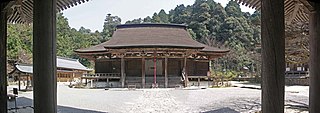
Saimyō-ji (西明寺), also known as Kotō-sanzan Saimyōji (湖東三山西明寺) or as Ryūōzan Saimyōji (龍應山西明寺) is a Buddhist temple of the Tendai sect located in the town of Kōra, Shiga Prefecture, Japan. The honzon of the temple is Yakushi Nyōrai, the Buddha of healing. The temple was founded in the early Heian period and together with Kongōrin-ji in Aishō and Hyakusai-ji in Higashiōmi the temple forms a group of three temples known as Kotō-sanzan. The complex includes several National Treasures and a garden designated as National Place of Scenic Beauty.

Wakasa Kokubun-ji (若狭国分寺) is a Sōtō Zen Buddhist temple located in the city of Obama, Fukui, Japan. It is one of the few surviving provincial temples established by Emperor Shōmu during the Nara period. Due to this connection, the temple grounds were designated as a National Historic Site in 1976. It is located about 20 minutes on foot from Higashi-Obama Station on the JR West Obama Line.

Hida Kokubun-ji (飛騨国分寺) is a Shingon-sect Buddhist temple in the Sowamachi neighborhood of the city of Takayama, Gifu, Japan. It is one of the few surviving provincial temples established by Emperor Shōmu during the Nara period. Due to this connection, the foundation stones of the Nara period pagoda located on temple grounds were designated as a National Historic Site in 1929.

Mino Kokubun-ji (美濃国分寺) is a Shingon-sect Buddhist temple in the Aono neighborhood of the city of Ōgaki, Gifu, Japan. It is one of the few surviving provincial temples established by Emperor Shōmu during the Nara period. Due to this connection, the foundation stones of the Nara period temple now located to the south of the present day complex were designated as a National Historic Site in 1916.

The Shinano Kokubun-ji (信濃国分寺) is a Tendai sect Buddhist temple located in the city of Ueda, Nagano, Japan. Its honzon is Yakushi Nyōrai. It is the successor to the Nara period kokubunji National Temples established by Emperor Shōmu for the purpose of promoting Buddhism as the national religion of Japan and standardising control of the Yamato rule to the provinces. The archaeological site with the ruins of the ancient temple grounds for the provincial temple and its associated provincial nunnery was collectively designated as a National Historic Site in 1974.
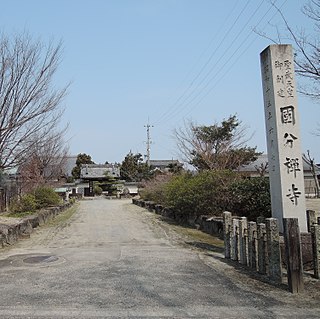
The Owari Kokubun-ji (尾張国分寺) is a Buddhist temple located in the Yawase neighborhood of the city of Inazawa, Aichi, Japan. The temple belongs to the Myōshin-ji branch of the Rinzai school of Japanese Zen. Its main image is a statue of Yakushi Nyōrai. It is the modern successor of one of the provincial temples established by Emperor Shōmu during the Nara period for the purpose of promoting Buddhism as the national religion of Japan and standardising control of Yamato rule over the provinces. The foundation stones of the original temple was designated as a National Historic Site by the Japanese government in 2012.

Shimotsuke Yakushi-ji (下野薬師寺) was a Buddhist temple located in what is now the city of Shimotsuke, Tochigi Prefecture, in northern Kantō region of Japan. It is one of the earliest Buddhist temples in western Japan, having been founded in the Asuka period. The temple is now a ruin and an archaeological site and has been designated by the national government as a National Historic Site since 1921.

Sannō temple ruins is an archaeological site with the ruins of a Buddhist temple located in what is now the Sōja neighborhood of city of Maebashi, Gunma, Japan. The temple no longer exists, but the temple grounds were designated as a National Historic Site by the Japanese government in 1928, with the designated area extended in 2008.
The Sado Kokubun-ji (佐渡国分寺) is a Shingon sect Buddhist temple located in the city of Sado, Niigata, Japan. Its honzon is Yakushi Nyōrai. It is the successor to the Nara period kokubunji National Temples established by Emperor Shōmu for the purpose of promoting Buddhism as the national religion of Japan and standardising control of the Yamato rule to the provinces. The archaeological site with the ruins of the ancient temple grounds for the provincial temple was designated as a National Historic Site in 1929.

Kazusa Kokubun-ji (上総国分寺) is a Buddhist temple in Ichihara, Chiba, Japan, belonging to the Shingon-shu Buzan-ha sect, and is the provincial temple ("kokubunji") of former Kazusa Province. The present temple is of uncertain foundation, but claims to be the direct descendant of the original Nara period kokubunji temple which fell into ruins sometime in the Muromachi period. The Nara-period temple ruins were designated a National Historic Site in 1929, with the area under protection expanded in 1979 due to additional archaeological finds.

The Kii Kokubun-ji (紀伊国分寺) is a Buddhist temple located in the Higashikokubu neighborhood of the city of Kinokawa, Wakayama, Japan. It was one of the provincial temples per the system established by Emperor Shōmu during the Nara period for the purpose of promoting Buddhism as the national religion of Japan and standardising Yamato rule over the provinces. The modern temple belongs to the Shingi Shingon sect and its main image is a statue of Yakushi Nyōrai.

Tanba Kokubun-ji (丹後国分寺) is a Jōdo-shū Buddhist temple in the Chitose neighborhood of the city of Kameoka, Kyoto, Japan. It claims to be the successor to one of the provincial temples established by Emperor Shōmu during the Nara period (710–794). Due to this connection, the foundation stones of the Nara period temple now located to the south of the present day complex were designated as a National Historic Site in 1928 with the area under protection extended in 2006.

Awaji Kokubun-ji (淡路国分寺) is a Ritsu-sect Buddhist temple in the Yagikokubu neighborhood of the city of Minamiawaji, Hyōgo, Japan. It the successor of the provincial temple established by Emperor Shōmu during the Nara period (710–794). Due to this connection, the foundation stones of the Nara period pagoda were designated as a National Historic Site in 1951.

Iwai temple ruins is an archeological site with the ruins of a Hakuhō period Buddhist temple located in the Iwai neighborhood of the town of Iwami in the San'in region of Japan. The foundations of a Japanese pagoda were designated as a National Historic Site in 1931.

Aki Kokubun-ji (安芸国分寺) is an Omuro-school Shingon-sect Buddhist temple in the, Yoshiyuki Saijomachi, neighborhood of the city of Higashihiroshima, Hiroshima, Japan. It is one of the few surviving provincial temples established by Emperor Shōmu during the Nara period. Due to this connection, the foundation stones of the Nara period temple were designated as a National Historic Site in 1932, with the area under protection expanded in 1977, and again in 2002.
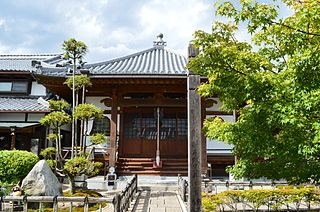
Chikuzen Kokubun-ji (筑前国分寺) is a Shingon-sect Buddhist temple in the Kokubunji neighborhood of the city of Dazaifu, Fukuoka, Japan. It is one of the few surviving provincial temples established by Emperor Shōmu during the Nara period. Due to this connection, the foundation stones of the Nara period temple overlapping the present day complex were designated as a National Historic Site in 1922.
Tōnobaru pagoda ruins is an archeological site with the ruins of a Asuka period Buddhist temple located in the city of Chikushino, Fukuoka Prefecture, Japan. It was designated as a National Historic Site in 1939.


